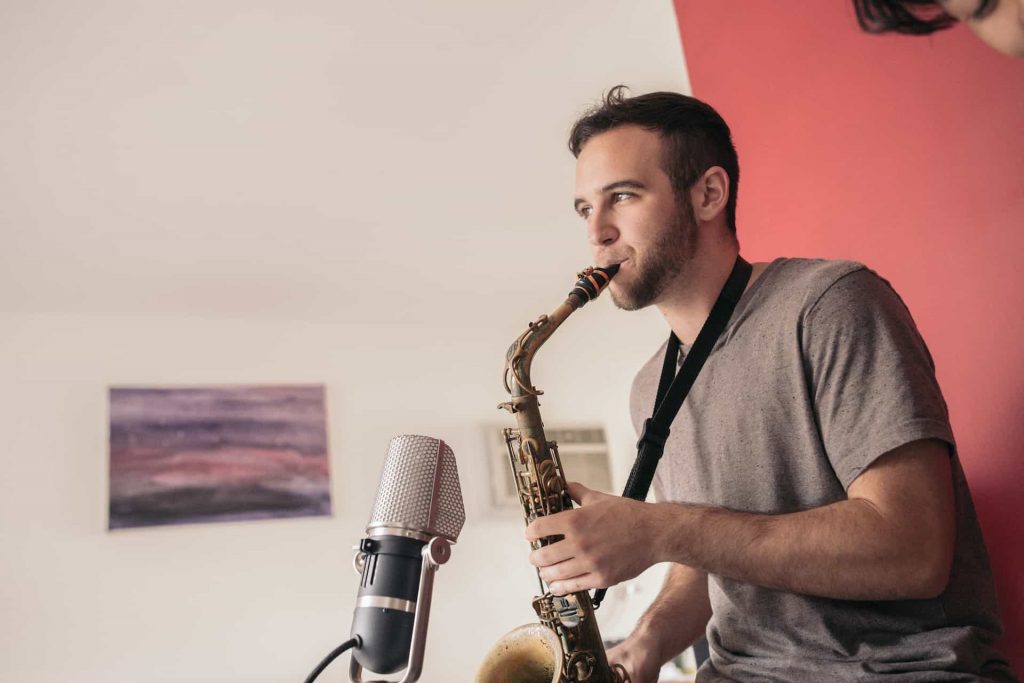The KU4’s extensive top-end clarity and balanced low-end are ideal strengths for capturing the sound of a wind instruments due to their expansive dynamic and frequency range. The KU4 is the brightest AEA mic in the line and performs well across any genre and in virtually any recording environment.

Close Miking
Woodwind instruments produce a comprehensive sound from the tone holes, keys, and the bell which can make them a difficult instrument to record. The balanced response and supercardioid polar pattern of the KU4 from as far as 16 inches away make it highly capable at effectively capturing all tonal aspects of a woodwind instrument while keeping out unwanted room tone and bleed. Placing your KU4 over the bell but pointing towards the tone holes will capture the most natural sound of your wind instrument.
.embed-container { position: relative; padding-bottom: 56.25%; height: 0; overflow: hidden; max-width: 100%; } .embed-container iframe, .embed-container object, .embed-container embed { position: absolute; top: 0; left: 0; width: 100%; height: 100%; }
Blending With a Room Mic
A popular method of using the KU4 is to pair it with a mic that is positioned at a distance from the source. The KU4 provides focus and detail of the instrument while the room mic provides depth and dimension. In the following AEA Session video, clarinetist, Phil O’Connor, performs “Capriccio”. The KU4 is close miking Phil while an R88 sits high in the back capturing the natural room ambience.
.embed-container { position: relative; padding-bottom: 56.25%; height: 0; overflow: hidden; max-width: 100%; } .embed-container iframe, .embed-container object, .embed-container embed { position: absolute; top: 0; left: 0; width: 100%; height: 100%; }
Live Woodwinds With the KU4
The KU4’s supercardioid polar pattern serves to reject unwanted room reflections and bleed from other instruments, allowing engineers greater freedom to position the KU4 within complex sonic environments.
.embed-container { position: relative; padding-bottom: 56.25%; height: 0; overflow: hidden; max-width: 100%; } .embed-container iframe, .embed-container object, .embed-container embed { position: absolute; top: 0; left: 0; width: 100%; height: 100%; }
The near-field design of the KU4 allows it to be positioned quite near the source, similar to a conventional dynamic microphone. Internal mechanics roll-off the low end of a signal before it reaches the ribbon, yielding balanced response between 2 and 18 inches from the source. The ribbon within the KU4 is well protected by precision fabric and is virtually impervious to loud volumes.